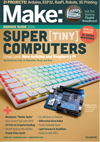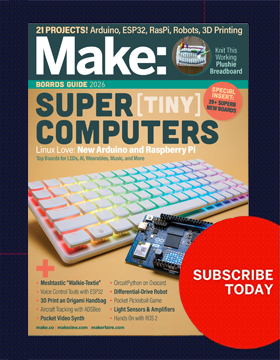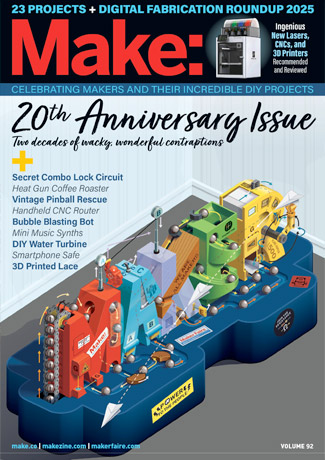
With a $50,000 grand prize, the TechCrunch Hardware Battlefield is one of the high-profile events at the annual CES conference in Las Vegas. This year’s winner was Siren Care (@SirenCare), a wearables company that embeds electronic sensors into clothing in order to track changes in a person’s health.
The company’s first product is smart socks that people living with diabetes wear. The socks monitor temperature and detect injury in real time, helping to alert people with diabetes who often have nerve damage and are unable to feel pain.

Ran Ma (@RanimalMa), Co-Founder and CEO of Siren Care, was previously the CMO of Voltset, a Danish consumer electronics startup. She successfully ran the Voltset Kickstarter campaign, which raised $113,548 (192% of their goal).

You launched Siren Care into a category that already had some strong products. Did that worry you?
We do have competitors, which is great. If you don’t have competitors—if no one else is doing something similar— you’re either a crazy genius or you’re just crazy. So having competitors, some of whom have done groundbreaking work, that’s good. It tells me that I’m not completely crazy.
In addition, we are thinking long term. Ideally we are developing technology that can generate product 1, 2, 3 and beyond. We want to make a family of products, using the same personnel, the same technology, the same expertise, and the same intellectual property. We want to conquer our beachhead use case of diabetic foot and then expand into adjacent markets.


What is your long-term vision?
We’re about using cutting-edge smart fabrics to make products focused on health and prevention, about using different techniques to integrate electronics into fabrics.
We’re focused on taking wearables to the next level. We want them to be discrete, continuous, and we don’t want you to have to make a behavior change. We want them to fit into your life as it is. So, for instance, our socks are machine washable, machine dryable, and you don’t have to charge them. They are just like normal socks. That’s the next stage of wearables.

Tell me about your experience making prototypes.
I hand-sewed prototypes in my room. I bought conductive thread from Sparkfun, I used an old Arduino I had sitting around. I took a soldering class at a makerspace called Noisebridge in the Mission area of San Francisco. I went in there and was like, “Can someone help me solder my sock?”
Did those early prototypes help you make your case?
The first couple prototypes were so bad, they were scary: wires coming off everything, the solder was terrible. I’d go to medical conferences to show it to doctors and they weren’t impressed. But I just kept working at it. The electronics got smaller, my app got better, the socks got smoother. Eventually the medical community started to buy into it.
It sounds like you had a lot of setbacks. What kept you going?
Going out and talking to potential customers, potential patients. We talked to nurses, care homes, doctors, wound experts. I went to a lot of conferences. I talked to diabetic patients about the product, and they would get emotional. People were so afraid of losing a toe or getting a foot amputated, losing their independence. I saw the real need. Every time I felt like giving up, I just remembered: this is important.

I guess that’s important when you’re dealing with the less glamorous aspects of starting a company.
When people see startup founders, they meet us on our best days. People see us at a conference on stage giving a talk, or unveiling a new product, or in Siren Care’s case, winning Hardware Battlefield at CES. You see us at our best and shiniest, but what you don’t see are all those days in between: when we haven’t slept for three days, maybe haven’t showered for two, or haven’t left our office at all. You don’t see us when our startups are about to run low on cash, when we are missing milestones and shipments are delayed.
Blood, sweat and tears go into founding a startup.
Most people only see the shiny outside. But it’s not about being glamorous, or about being a winner. It’s about surviving. Half the time you’re just trying to survive until the next day. So when you are thinking about starting your company, make sure you are aware and ready to go through both the highest highs and the lowest lows. It is key to have around you a good support network of family, friends, and, most importantly, other founders that have been through it all. My advice is to work hard and stay humble.
Do you think the game has changed now that sensors and prototyping tools are more accessible to makers?
Yes. Sensors are getting smaller and cheaper every day, which is great for wearables and IoT devices. It’s all much more accessible, which opens the door to more and more makers. It allows more people to start making prototypes. That’s very important because when you have an idea that you’re having trouble explaining, you can get it into physical form and show it to people. Sometimes it’s not a great prototype, but it’s better than air.

You used crowdfunding for your first project, the multimeter Voltset. On your second product, you went the venture capital route. Why the change?
It’s different for every company. It’s important to think about what you want to build. Some of my friends’ companies are fine just coming off Kickstarter or Indiegogo, or they can survive on revenue. Other companies go the VC route because they need a lot of capital for R&D or manufacturing. We wanted to build a large company. We’ve spent a lot of time in R&D, figuring out technology and a road map for the future. So in our case, fundraising has been a priority, because we want to take on outside capital to grow faster.

You’ve been fundraising recently. Are you always fundraising?
We’ve been fundraising because we’ve had so much momentum. After we close this round, we’ll be okay for one to two years, especially since we’ll have revenue coming in. But fundraising is not a one-day or one-month thing. A lot of it is about relationships, especially for young companies. Even if you’re not fundraising, it’s always important to be networking, and building strong and positive relationships over time. That’s a long process. So even if we’re not actively fundraising, we’ll always be building those relationships.
You’re launching healthcare products. Was the prospect of dealing with the FDA and other regulatory agencies intimidating?
Going the healthcare/regulator route can be challenging and complex, but there’s also some protection. If you take the time, do some research, and consult with experts, you can begin to unravel some of the regulations. There are many FDA clearances that are not that hard to get. Once you get that clearance, it’s good for you: you’ve built a moat around yourself. That means it’s going to be that much harder for people to copy you, and to get to your level.
Are there regulatory levels that are more accessible to makers? For example, making a “tool” rather than a “diagnostic device?”
We always say we’re a tool and not a diagnostic. We provide the right data at the right time. We monitor the temperature of someone’s feet. Temperature is related to inflammation, your body’s response to injury. We can’t diagnose what the injury is: a blister, a splinter, or something more serious. We just know that your body is fighting injury and you need to see your doctor. We’ve created a tool that measures one specific thing.
What lessons did you learn from your first product, the Voltset multimeter?
It opened my eyes to the possibilities of the Internet of Things and connected devices. And it opened my network to the Maker community. I went to so many Maker Faires! Voltset really helped me learn about prototyping, learn about Arduino and other boards. It taught me that if you had an idea, you could make it.
Another key lesson I learned: build a strong team. You’ll depend on them for solving problems. Once I knew the product I wanted to build, the next important step was to build a world-class team with expertise in the fields I was working in: textiles and electronics. Ultimately you want to have a team that can help you manufacture and ship hundreds of thousands of units.
No matter your skill level, or engineering level, there are so many resources out there — makerspaces, etc. The first prototypes may not be pretty, but that experience is going to help you. Making those first prototypes was really important because I now understand the product on a fundamental level, because I made it with my own hands.
ADVERTISEMENT





